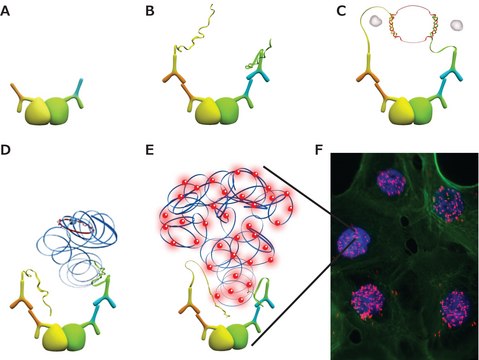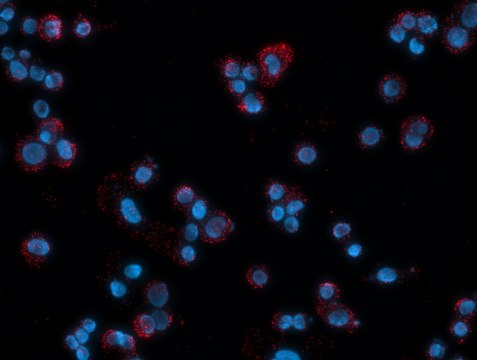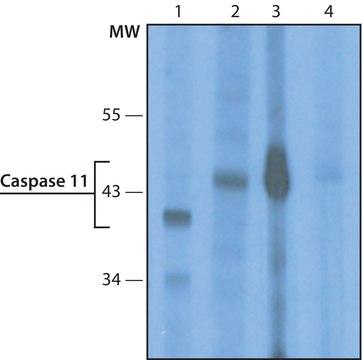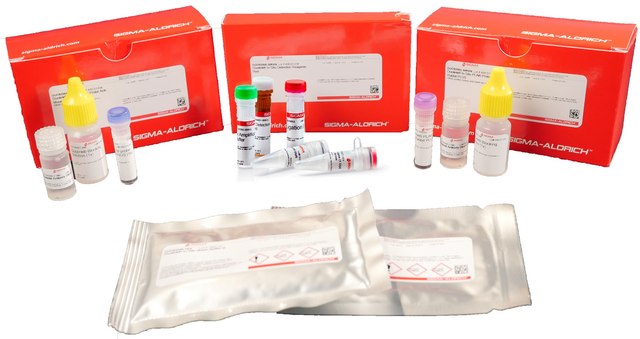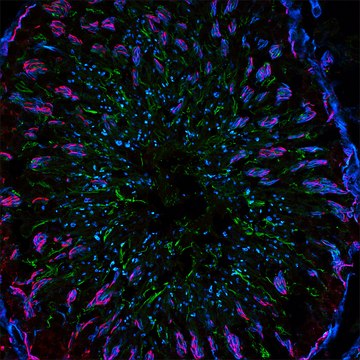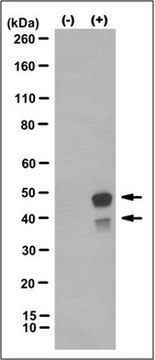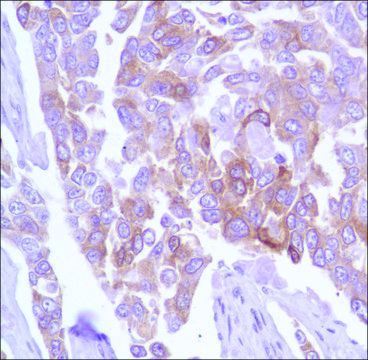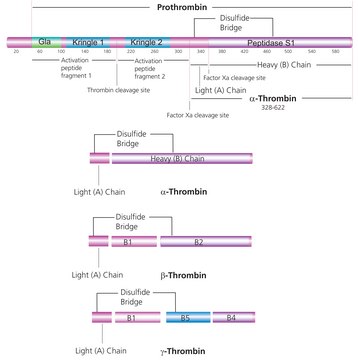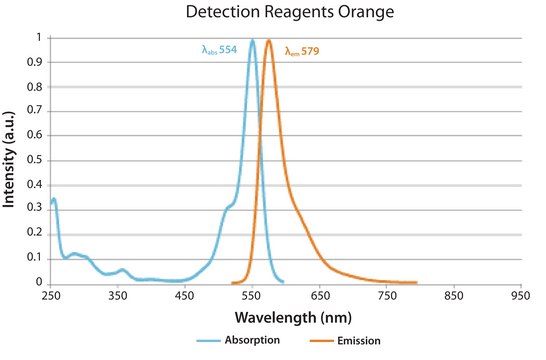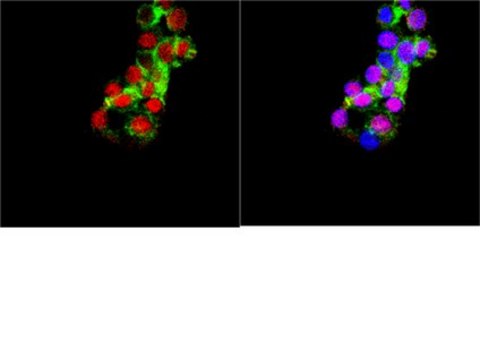MAB5430
Anti-Tau Antibody, Caspase Cleaved (truncated at Asp421)
clone tau-C3, Chemicon®, from mouse
Sign Into View Organizational & Contract Pricing
All Photos(1)
UNSPSC Code:
12352203
eCl@ss:
32160702
NACRES:
NA.41
Recommended Products
biological source
mouse
Quality Level
antibody form
purified immunoglobulin
antibody product type
primary antibodies
clone
tau-C3, monoclonal
species reactivity
human
manufacturer/tradename
Chemicon®
technique(s)
ELISA: suitable
immunohistochemistry: suitable
western blot: suitable
isotype
IgG1
NCBI accession no.
UniProt accession no.
shipped in
wet ice
target post-translational modification
unmodified
Gene Information
human ... MAPT(4137)
Specificity
Reacts with Tau, caspase cleaved (truncated at Asp421). The antibody shows no reactivity with full length tau nor other tau C-terminal truncations. The antibody stains amyloid beta treated neurons and brain tissue in Alzheimer′s disease, more specifically it stains a subset of neurofibrillary tangles, tau-containing neuritic plaques and neuropil threads.
Immunogen
Epitope: Caspase Cleaved (truncated at Asp421)
Peptide corresponding to the C-terminus of tau truncated as aspartic acid 421.
Application
Anti-Tau Antibody, Caspase Cleaved (truncated at Asp421) is an antibody against Tau for use in ELISA, WB, IH.
Research Category
Neuroscience
Neuroscience
Research Sub Category
Neurodegenerative Diseases
Neurodegenerative Diseases
Western blot
Immunohistochemistry
ELISA
Optimal working dilutions must be determined by end user.
Immunohistochemistry
ELISA
Optimal working dilutions must be determined by end user.
Target description
43 kDa (aa 1 to 421) or smaller fragments with Asp421 as the c-terminus
Physical form
Format: Purified
Purified immunoglobulin. Liquid in PBS. Contains no preservative.
Storage and Stability
Maintain at 2-8°C in undiluted aliquots for up to 6 months after date of receipt.
Other Notes
Concentration: Please refer to the Certificate of Analysis for the lot-specific concentration.
Legal Information
CHEMICON is a registered trademark of Merck KGaA, Darmstadt, Germany
Disclaimer
Unless otherwise stated in our catalog or other company documentation accompanying the product(s), our products are intended for research use only and are not to be used for any other purpose, which includes but is not limited to, unauthorized commercial uses, in vitro diagnostic uses, ex vivo or in vivo therapeutic uses or any type of consumption or application to humans or animals.
WGK
WGK 2
Flash Point(F)
Not applicable
Flash Point(C)
Not applicable
Certificates of Analysis (COA)
Search for Certificates of Analysis (COA) by entering the products Lot/Batch Number. Lot and Batch Numbers can be found on a product’s label following the words ‘Lot’ or ‘Batch’.
Already Own This Product?
Find documentation for the products that you have recently purchased in the Document Library.
Debra K Kumasaka et al.
International journal of physiology, pathophysiology and pharmacology, 1(1), 48-56 (2009-01-12)
A recent study demonstrated the lack of beta-amyloid (Abeta) plaque formation and accumulation of the amyloid precursor protein (APP) in a triple transgenic mouse model of Alzheimer's disease (3xTg-AD) following overexpression of the anti-apoptotic protein, Bcl-2 (Rohn et al., J.
Patrice Delobel et al.
The American journal of pathology, 172(1), 123-131 (2007-12-15)
Recent evidence has suggested that truncation of tau protein at the caspase cleavage site D421 precedes hyperphosphorylation and may be necessary for the assembly of tau into filaments in Alzheimer's disease and other tauopathies. Here we have investigated the time
Tau pathogenesis is promoted by A?1-42 but not A?1-40.
Hu, X; Li, X; Zhao, M; Gottesdiener, A; Luo, W; Paul, S
Mol. Neurodegener. null
John C Means et al.
Neurochemical research, 41(9), 2278-2288 (2016-05-26)
Mouse models of neurodegenerative diseases such as Alzheimer's disease (AD) are important for understanding how pathological signaling cascades change neural circuitry and with time interrupt cognitive function. Here, we introduce a non-genetic preclinical model for aging and show that it
John C Means et al.
International journal of molecular sciences, 18(7) (2017-07-15)
The polyphenolic phytostilbene, trans-resveratrol, is found in high amounts in several types and tissues of plants, including grapes, and has been proposed to have beneficial effects in the central nervous system due to its activity as an antioxidant. The objective
Our team of scientists has experience in all areas of research including Life Science, Material Science, Chemical Synthesis, Chromatography, Analytical and many others.
Contact Technical Service